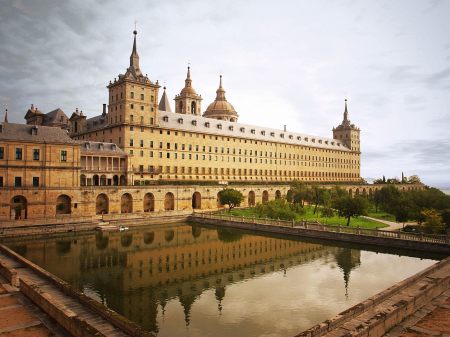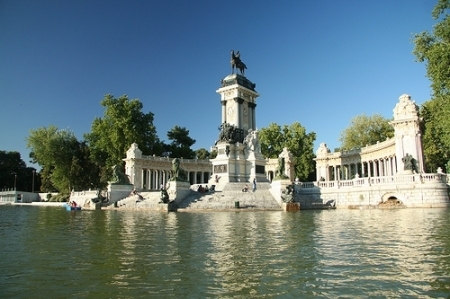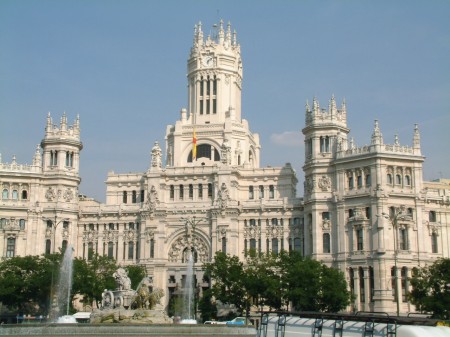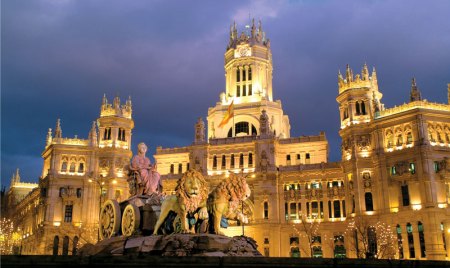Madrid is the capital and largest city of Spain. Aside, from it’s
role as a city, Madrid is also one of the 17 autonomous communities of
Spain (Madrid Autononmous Community). It is the third-most populous
municipality in the European Union after Greater London and Berlin, and
its metropolitan area is the third-most populous city by urban area in
the European Union after Paris and London.
Madrid sits in the geographic centre of the Iberian Peninsula and has
long been an important stop on any art tour through Europe. The famous
Museo del Prado on the city’s ’Museum Mile’ houses important works by
Spanish and European masters from the Renaissance onwards, while the
Museo Thyssen-Bornemiza houses one of the most extensive private
collections in the world. The Museo Nacional Centro de Arte Reina Sofia
is devoted to 20th century Spanish art, with works by Miro, Dali and
Picasso.
Visitors wishing to take a break from all that art may want to see the
Plaza de Toros, Spain’s largest bullring, where regular bullfights are
still held. Sports fanatics who like something a little less
blood-thirsty can watch Real Madrid, or Atletico de Madrid, Spain’s most
famous football teams kick off.
Due to its elevation as the highest capital city in Europe, Madrid’s
climate is somewhat extreme with hot summers and bitterly cold winters.
Spring is arguably the best time to visit and explore the squares and
alleyways in the heart of this sometimes overcrowded city.
Madrid is a city of great monuments. Among its highlights are the
medieval centre dating back to the Habsburg Empire and the Prado Museum.
But Madrid is not just a cultural destination. It is also a lively
metropolis with many pubs, cafes, discotheques and nightclubs open late
into the night. Don’t be surprised if you get stuck in a traffic jam at
four in the morning, and the people you meet are not necessarily going
off to work.
Puerta del Sol: It’s nearly impossible to visit
Madrid and not pass through this semi-circular space, if only because it
is very much the hub of the public transport system. From here, too,
the Calles Arenal and Mayor lead away to the Plaza Mayor and the Palacio
Real, while to the west Calle Alcalá and the Carrera de San Jerónimo
run to the Huertas area, the Paseo del Prado and the main museums. It is
called a Puerta (gate) because this was indeed the main, easternmost
gate of fifteenth-century Madrid. Under the Habsburg Kings it was
surrounded by churches and monasteries, and the space between them
supplanted the Plaza Mayor as the city’s main meeting place. It was
rebuilt in its present form in 1854-62. It still is Madrid’s most
popular meeting point.
Plaza Mayor: Madrid’s grand main plaza was the city’s
hub for centuries. It was first built in the fifteenth century as a
humble market square, then called the Plaza del Arrabal (Square outside
the Walls). After Madrid was made capital of Spain by Philip II Juan de
Herrera drew up plans for it to be completely rebuilt, but the only part
built immediately was the Casa de la Panadería (The Bakery). Dominating
the square, with two pinnacle towers, it was completed under the
direction of Diego Sillero in 1590. Large sections had to be rebuilt
after a disastrous fire in 1790. Bullfights, carnivals and all the great
festivals and ceremonies of imperial Madrid were held here.
Palacio Real (Palacio de Oriente): You are unlikely to
catch sight of Spain’s royal family here, as this 3,000-room official
residence is only visited by them for occasional state functions
requiring additional grandeur. The rest of the time the palace,
commissioned by Philip V after the earlier Alcázar was lost to a fire in
1734, is open to view.









0 comments:
Đăng nhận xét